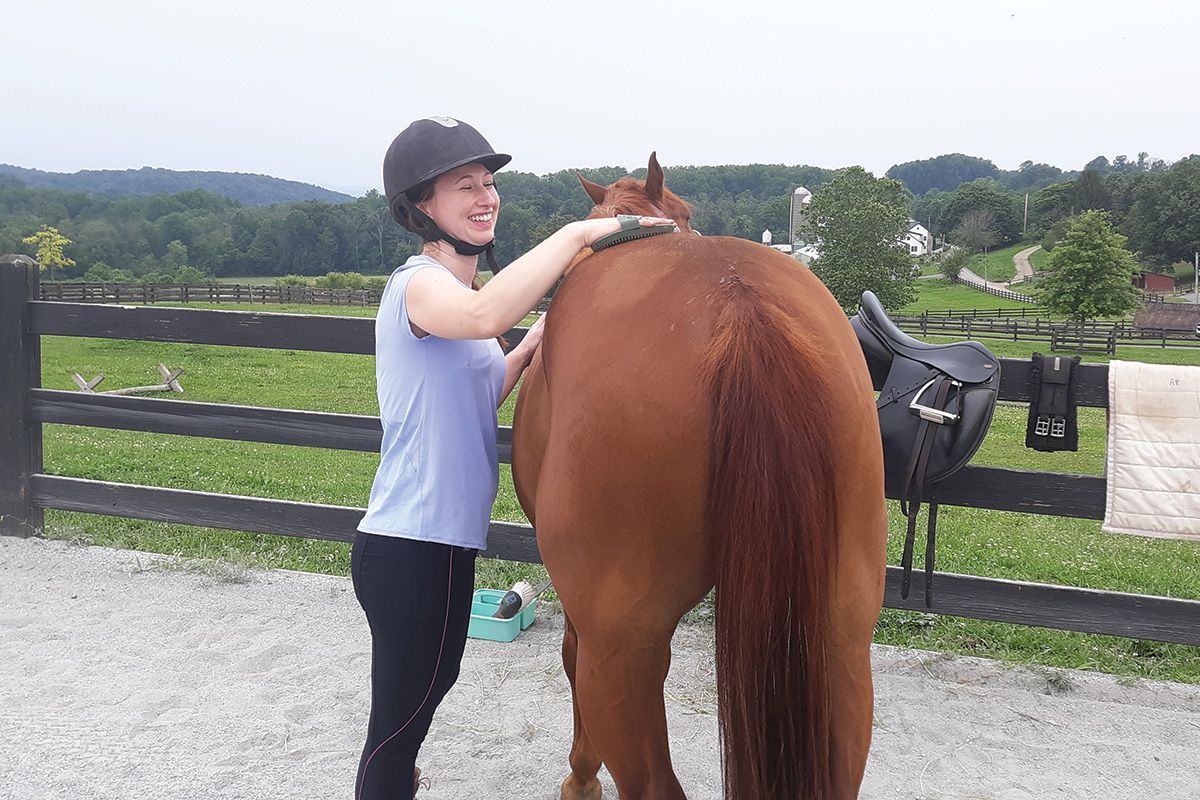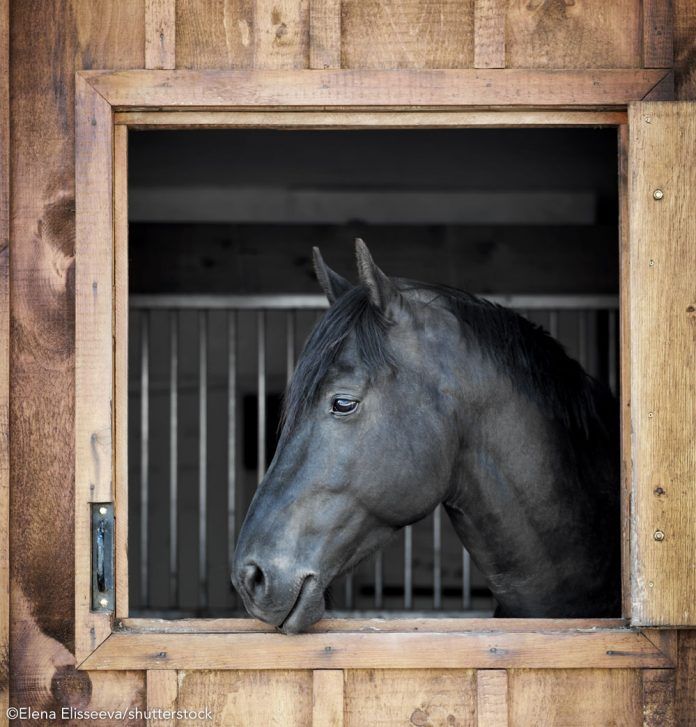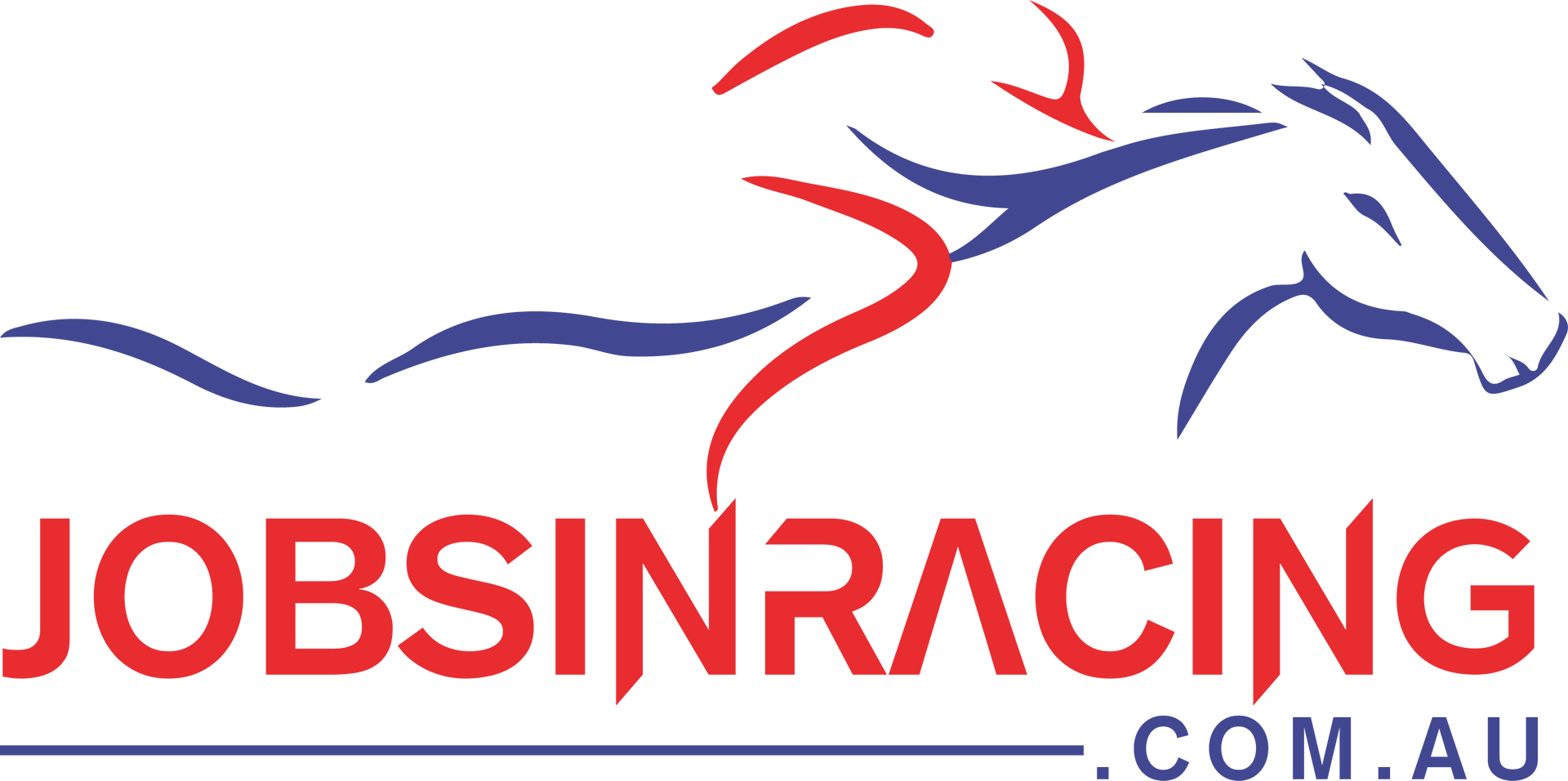How Much Land Per Horse?
The amount of land an equine business needs to sustain each horse varies. How the horses will be used, the stable’s master horse-keeping plan and the surrounding community are significant factors in determining just how much land is needed.
There are many things to consider when running a horse boarding facility or your own farm. Traditionally, there has been a per-acre approach to estimating land needs. Often, one horse per acre is used as a starting point. In some cases, two acres is recommended for the first horse and one additional acre for each additional horse is suggested to prevent over-grazing of pastures.
However, determining land needs based on an acreage per horse doesn’t necessarily account for local zoning ordinances, federal storm water regulations, management practices, horse use and the ability of the land to support each horse. Running a horse farm or facility is hard work and you shouldn’t go into it blind.
Denise O’Meara, director of education at the Equine Land Conservation Resource (ELCR), recommended against using the traditional approach of assigning a specific number of acres based on the number of horses at the facility.
“We recommend that stable owners first consider what they are doing with the horses and the carrying capacity of the land,” she said.
Considering the land’s carrying capacity and use when deciding how much property is needed per horse allows for the consideration of many factors. These include overall pasture management, pasture rotation, manure management, stream and pond buffering, and other best-management practices that can help the environment remain healthy for horses and people.
PASTURE FOR FORAGE
Horses are naturally designed to meet their daily nutritional needs through grazing. Grazing can be an effective, inexpensive method for providing nutrients and fiber. Barns that rely on turnout to provide forage as a portion of a horse’s ration naturally need more acreage to provide adequate nutrition. A good rule of thumb is to maintain at least 50 percent vegetative cover—or no more than 50 percent bare ground.
According to the NRCS Missouri Pasture Management Guide For Horse Owners, horses are problematic grazers. The more options a horse has for grazing, the more selective he will become in what he eats and what he leaves behind. Cattle and other livestock more evenly consume all the forage in a pasture, including less palatable plants. At the beginning of the season, your pasture forage should be between 6″-8″ tall. The horses should not be allowed to eat the plants to less than 3” tall in order to promote healthy regrowth.
While pasture is the preferred forage at some barns, other stables utilize paddocks for exercise, but not for dietary purposes. This can be effective, as well. Non-grazing lots can be smaller and potentially allow for a higher stocking density. For example, a facility might only provide a 20-foot-by-40-foot run for a horse. Those horses can remain as healthy as horses running in a 40-acre field, and their nutritional needs can be provided through feed, supplements and hay
These non-grazing spaces are also referred to as dry lots, exercise lots, stress lots or sacrifice lots. According to Washington State University’s Managing Small-Acreage Horse Farms, the minimum recommended space in a dry lot is 400 square feet per horse, although a larger space would be more desirable. In smaller turnout pens, it’s critical to remove manure frequently to avoid a buildup, which can attract flies or produce an odor. Sacrifice lots are also an important component of rotational grazing plans that allow periods of rest and recovery for pastures with vegetation.
Other barns choose to keep horses stalled unless the horses are being exercised. Horse facilities that use this approach can likely keep more horses on a given piece of property than stables that offer some type of turnout.
In each of these scenarios, deciding the amount of land needed based on nutritional and exercise needs alone doesn’t take into account other factors, such as the community’s zoning ordinances and best management practices.
BEST-MANAGEMENT PRACTICES
As previously mentioned, an alternative approach to a number-of-horses-per-acre method is to consider the carrying capacity of the land and its use. This model requires more thought and a thorough understanding of local zoning ordinances and stormwater management plans, said O’Meara. This approach also includes a broader stable management plan incorporating pasture rotation, manure management, stream and pond buffering, and much more.
Commercial stables need to be located within close proximity to developed areas for easy access to lessons, training and boarded horses. A closer proximity to developed communities means that zoning laws and ordinances are more likely to include guidelines governing how many horses can be kept on a parcel of land.
“As federal, state and municipal regulations tighten, this approach may become the norm,” she said. “Look at the community’s comprehensive plan and the horse-friendliness of the area. It sounds like a lot of work, but it is worth it.”
Even neighborhoods that are zoned for horses might not be horse-friendly if there aren’t any horses currently in the community.
“Talk to a few residents to get a feel for how horse-friendly the area is,” she said. “Even though horse people think horses are beautiful, not everyone agrees. Some people only see manure in the road, flies or dust.”
Unfortunately, universal language does not exist for a town’s comprehensive plan or zoning ordinances. They vary from one community to the next and can address stocking density, environmental plans and the number of horses allowed on the property. These regulations can also contain specific details about which properties can/cannot have horses.
For example, near O’Meara’s childhood home on Long Island, New York, the community is zoned for horses on lots with one acre. Specifically, two horses are allowed per half-acre. However, that’s only if the property has previously had horses on it.
“If you have not had horses on the property, you must apply to the neighbors and they have to be given the chance to voice any concerns before the permit is approved,” she said.
Similarly, in this community, the regulations say that the horses on the property must be owned by a family member living on the property. Documentation is required as proof. Even keeping a horse for a friend is not allowed and is considered a commercial activity, which is not included in the zoning provisions.
Smaller barns located on limited acreage will likely have little flexibility beyond the town’s comprehensive plan. Stables that exceed the community’s maximum acreage under the ordinance are generally considered agricultural land and are covered by right-to-farm laws, she said.
Rural areas can feel the pressure as much as suburban areas. In some places, farm communities are being replaced with suburban sprawl. That could mean that the town planning committee is considering a rezoning plan.
When shopping for new property, look at nearby land plots and see if other farms are up for sale, which could suggest impending development. Whether you’re already established in a location or looking for new property, ask the town planning committee whether they anticipate any changes to the current zoning ordinances, O’Meara suggested.
Stable owners should also be aware of environmental regulations outlined in a community’s stormwater management plan. These guidelines cover water quality and quantity, as well as the prevention of soil erosion related to runoff, dust control, etc.
“These may include fencing setbacks from streams to prevent horses from getting in and churning up the water, infiltration basins and more,” she said.
HOW MANY HORSES ARE TOO MANY?
That depends. There are many different answers to this question. First, from an economic standpoint, if you are struggling financially to feed all the horses, there are too many.
When monthly board, lesson clients and training horses are barely covering the operating expenses, leaving little cash for “extras,” it’s time to honestly evaluate the number of barn-owned horses and which ones might be candidates to sell.
If the pastures are being overgrazed or other resources are being stretched, then there are either too many horses or a different management strategy is required.
When you’re unable to provide proper care for all the horses, it’s time to sell. If the horses are not receiving proper daily care—i.e., are not visually evaluated daily, stalls cleaned appropriately, etc.—then there are too many horses for the available resources.
Selling barn-owned horses might be a difficult decision, but when it is in the horse’s best interest, you’ll feel much better knowing that each horse is in a situation where it can be cared for and receive attention/exercise. And no sale ever has to be final. If it’s a horse you’re attached to, you can requested a contract that offers you the first chance to buy the horse back if it goes up for sale in the future.
Similarly, there can a time when you have too many client-owned horses to care for. The same criteria should be used to evaluate that situation. However, the solution might be investing in barn help or scaling back on the number of boarders so that adequate care can be provided to all of the horses.
TAKE-HOME MESSAGE
Every stable is different in the way that it relies on pasture for nutrition and turnout. Before buying a new piece of property or expanding the current amount of land that the stable owns, it’s important to decide how it will be used. It’s also a good idea to investigate local zoning ordinances and environmental impact plans.
Source: https://stablemanagement.com/articles/how-much-land-per-horse/


